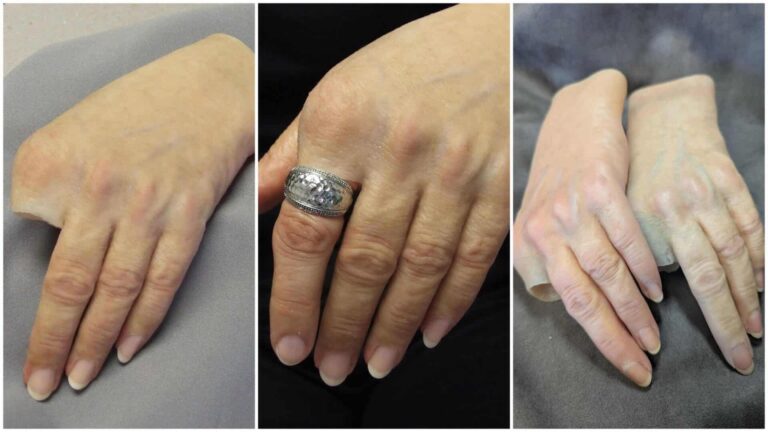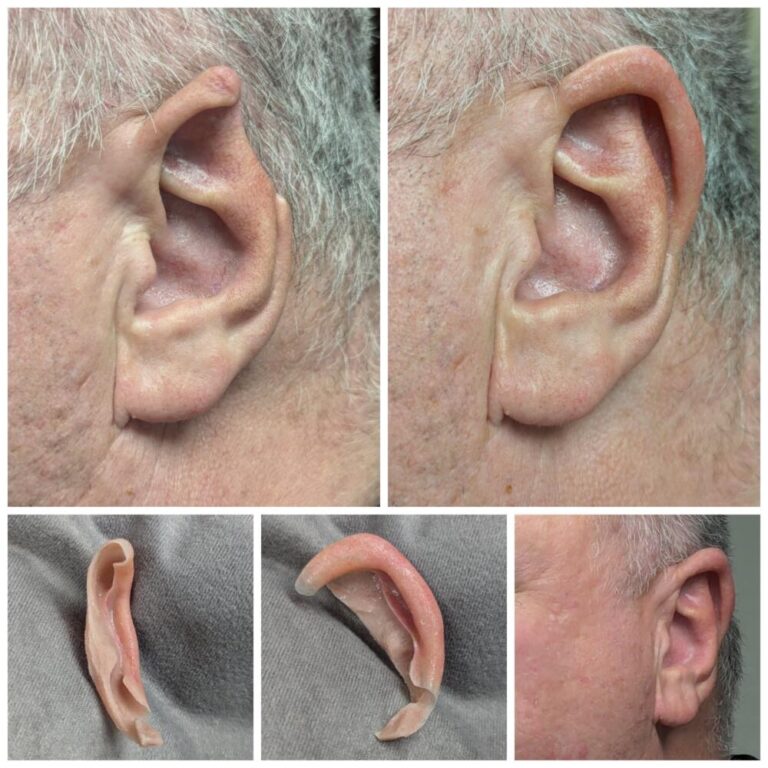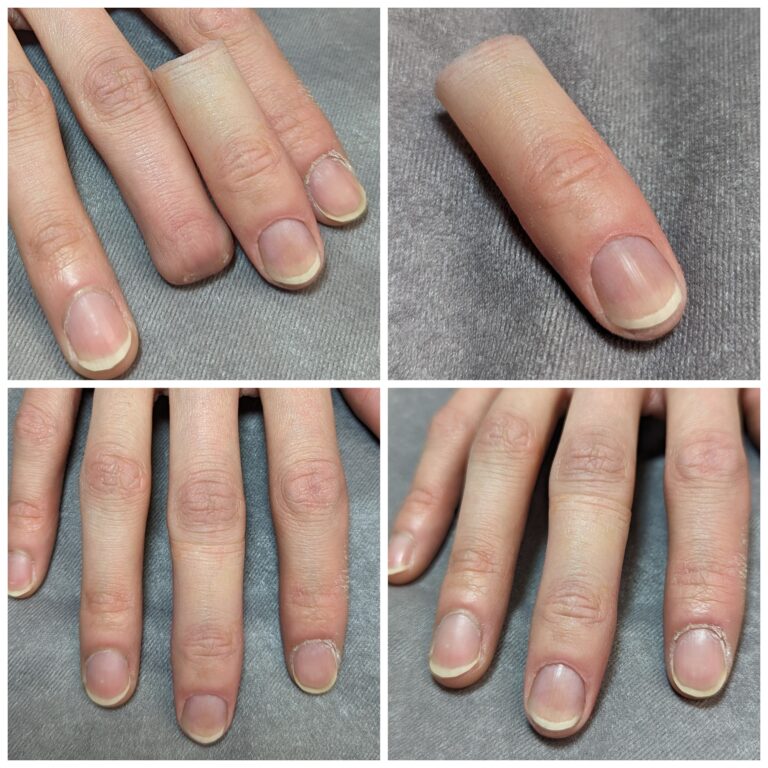“Facial Prosthetics”, Dallas, 1985
Our first inauspicious entry into professional practice began in the Spring of 1985 in Dallas, Texas. After a brief welcome to Dallas by Mohs surgeon Willis I. Cottel, MD and his gracious offer to see the first few patients in his office I located a tiny office in the Arts District of Dallas. It was a 3 room suite on the corner of Bowen and Carlisle used previously by a photographer and if I remember correctly only 317 total square feet! I felt at home in a building with graphic artists, a medical photographer, and even an office of the world-famous craniofacial surgeon Kenneth Salyer, MD.
Moving from a safe staff job at UTHSCSA as “Medical Sculptor” to a new city was a risk that had to be taken. The lab in my first office was formerly a dark room with large sink, perfect. The glass reception room was just off the building’s plant filled atrium so I had additional ambient seating for patients. My office in the back was just big enough with desk and hospital bed on wheels to swing into position across from a seated patient for sculping, tinting, or delivery sessions. One whole wall was glass with a glass door for great north light and walkout to study facial prosthesis results in natural light, if I felt the need. The first practice DBA was registered in Dallas as “Maxillofacial and Somato Reconstruction Through Prosthetics”. Ostentatious perhaps, but it garnered attention in a medical community apparently in desperate need of quality facial prosthetics.
From Dallas to Madison in 2005
Making prosthetic noses, eyes, and ears is one thing. Recruiting and paying another anaplastologist and learning about business valuation and sales is another thing. Its another chapter or two, but fast forward 20 years and the Texas practice has been successfully packaged and put into transition mode through the sweat equity model. With monthly collections always uncertain paying for professional guidance at $200-$400/hour was scary. But the great people and excellent advisors at Dental Medical Enterprises in Dallas were worth the peace of mind. With my input they and another expert Bob Reznik of Prizm Development created the employment agreements and proforma documents that guided the transition smoothly to the next anaplastologist.
Now, its time to start all over in another kind of challenging dynamic in my hometown of Madison, Wisconsin.
Madison 20 Years Later and Still Growing
Starting the independent facial prosthetics office in Madison was a challenge. The small medical community was already satisfied with the occasional facial prosthetics being provided through the conventional dental delivery model; the local prosthodontist overseeing delivery of facial prostheses in his office by a very capable itinerant anaplastologist. The adversity of beginning as an outsider in this kind of environment was the challenge that inspired expanding the delivery of facial prosthetics to other cities, first Chicago, then Los Angeles, and so on. I have lived a sea change in the way facial prosthetics have been delivered in the United States. Once frowned upon almost universally by the medical and dental community, the medical artist operating independently as an anaplastologist in his or her own office has become widely accepted…or at least widely utilized due to the aesthetic results referring surgeons want their patients to have.
Support the Medical Art Prosthetics Practice Model
The dedication of anaplastologists associated with Medical Art Prosthetics as well as others who have jumped in with both feet as independent professionals focusing their talents to deliver beautiful facial and somatic prosthetics has dramatically improved the quality of life of thousands of people who were not happy with conventional prosthesis delivery or who were not finding the service at all. Every clinical anaplastologist that provides facial and somatic prosthetics does so because they are confident in their artistic and prosthetics expertise and feel privileged to contribute to patient successes. Help us celebrate a 40-year facial prosthetics specialty private practice model that will continue to improve patient outcomes and be a standard bearer for the profession.




